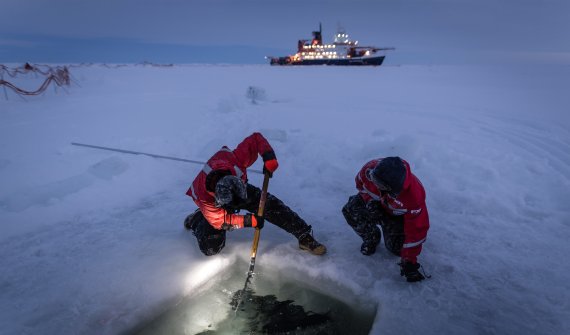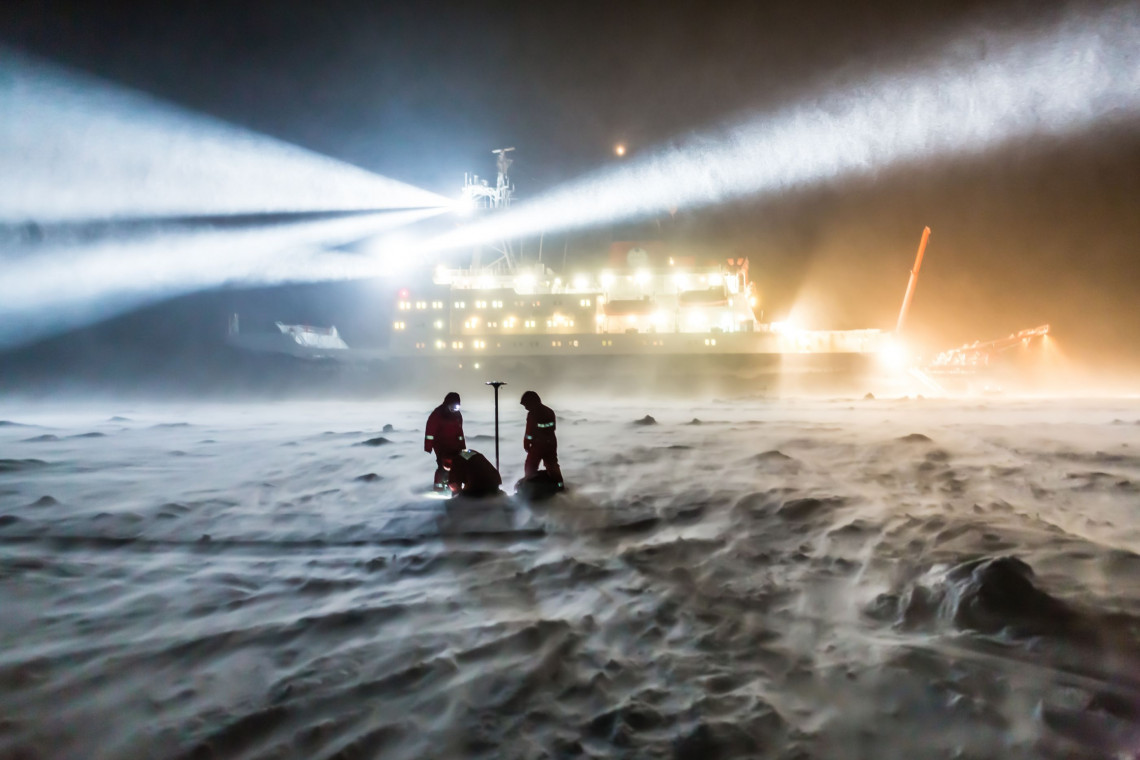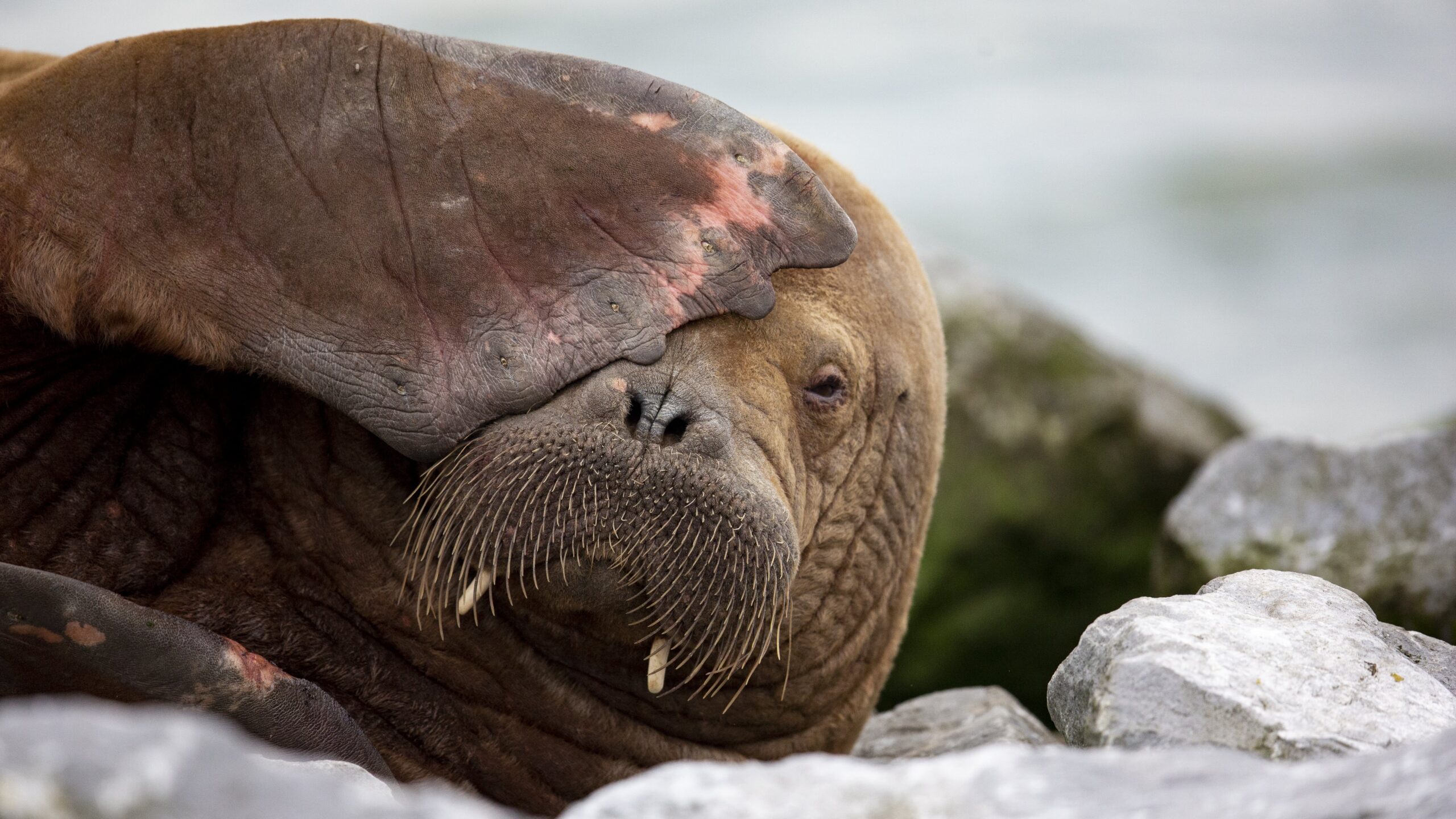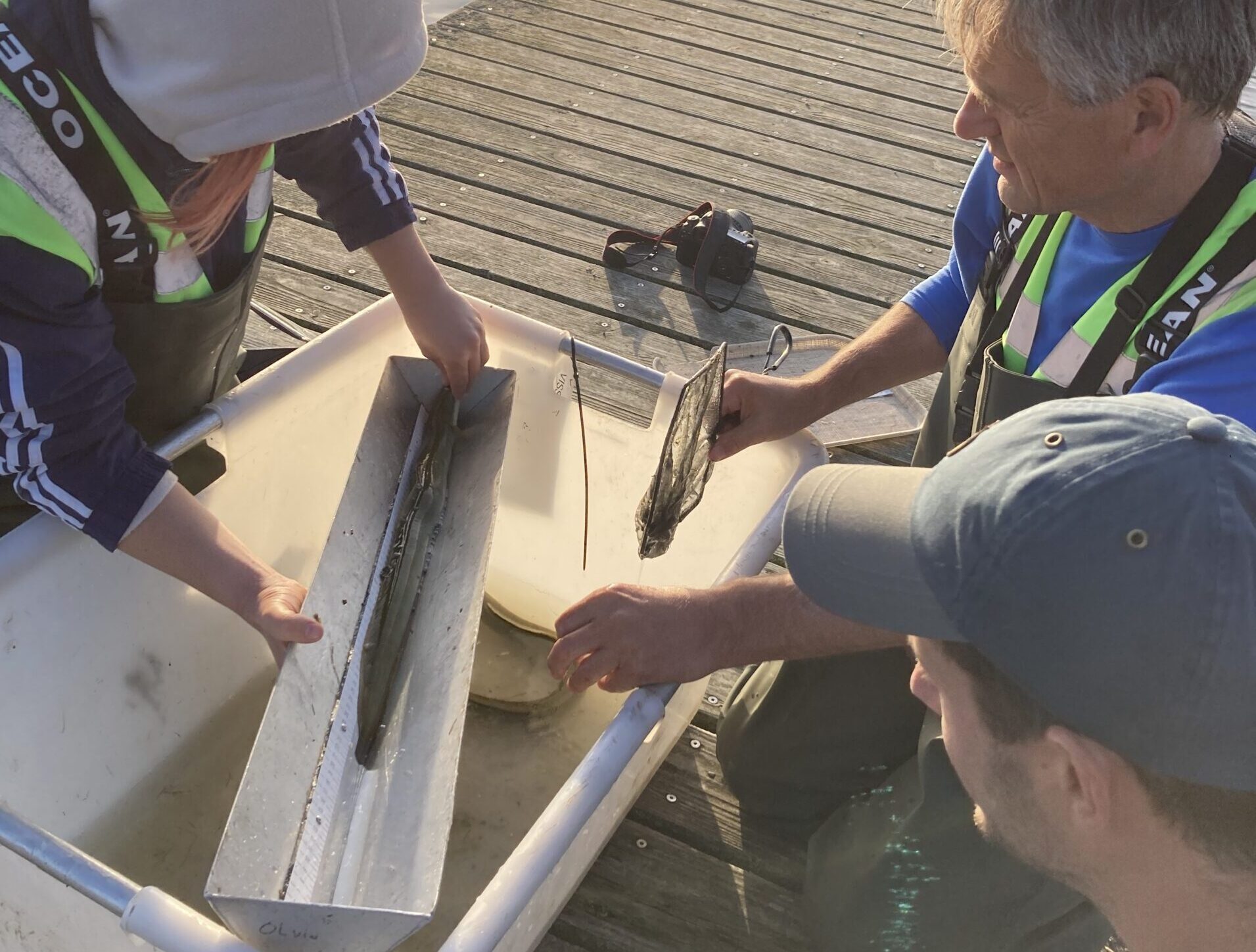Resource talked to Serdar Sakinan, a researcher with Wageningen Marine Research. He was due to hand over to someone else at the beginning of April, but due to the coronavirus travel ban, a new team of scientists will not be coming and he is stuck on the ship until June.
Sakinan boarded the Polarstern on January to do research on plankton and fish. The researchers on board only realized quite late how extensive the corona crisis is. For his research, it is not a problem to stay on board longer, and there is the possibility of evacuation in an emergency. ‘Of course I would rather be at home, but I don’t mind staying here.’
You’ve been working for months in extreme conditions. What’s that like?
The ship is anchored to ice that is so thick that it sometimes feels as though you are walking on solid ground. Sometimes the ice breaks and big cracks appear, so we can’t work at certain locations. We work from the shop and from tents set up on the ice, sometimes over a hole in the ice where we take measurements. Those tents are heated to 15℃. That is not just for the people who work in them, but also because the instruments cannot withstand extremely low temperatures. And the holes would freeze up and close otherwise. Sometimes the temperature can drop to -40℃. At lower temperatures we stop going out of doors. I found it difficult to protect my nose and fingers from the cold. But since mid-April it’s been less extreme and is rarely lower than -30℃.’
What were the biggest highs and lows?
Part of my research is on zooplankton, and an exciting moment for me was when I caught a specific type of zooplankton at a depth that exactly fitted my predictions, showing that my acoustic measurements were correct..
The toughest moments was when I had to rescue the underwater camera because the ice was starting to crack. That camera hangs 270 metres below the ice. The images are sent to the ship through a fibre-optic cable, and the cable was frozen in the ice, which was two metres thick. We had to remove the ice, but it was a cold and windy day. My gloves got wet and my fingers were freezing. When we got the camera up, it turned out that the hole in the ice wasn’t big enough. The whole operation took more than two days.
What is your working day like?

‘Even though there is no rhythm of day and night – for the first few weeks it was dark all the time – we keep to Western European time. After breakfast, we have a daily briefing about the weather conditions and the state of the ice. Based on that, we plan the day’s activities. We collect the zooplankton, for instance, in ‘Ocean City’, a big tent on the ice about 300 metres from the ship. We walk there, pulling our equipment behind us on a sled. The tent stands over a big hole in the ice, which we can lower nets into. Later we make way for other scientists who come to take water samples, for instance. In the afternoon we process our samples in the lab on board ship. After the evening meal, there is a team meeting, followed by a general meeting with all the scientists. At the end of that, people of show each other the photos they took that day, in a slide show.’
What do you do in your spare time?
‘We have a gym on board, a sauna, a bar and a swimming pool. And outdoor activities are organized on the ice, such as a walk or a game of football. There are about 100 people on board, so there is always someone to talk to. I share my cabin with a German researcher who I get on well with. But I would prefer to have a place to myself.’
What’s it like to be away from home for so long, especially now during the corona pandemic?
‘I’ve been away for over three months now. I spent the first month on board a Russian icebreaker that brought us to the Polarstern, the research vessel. That was a slow voyage and I got frustrated sometimes because I couldn’t do very much. At the same time, it was the first time I had seen sea ice, and that was fascinating. Since I’ve been on board the research ship, time has flown. I have now developed my own routine and I’m afraid I’ll have to get used to being at home again.’
We don’t hear much news here, so at first the scale of the corona outbreak was not clear to us. When it did become clear, we immediately heard that we would not be able to leave the ship for a while, since the travel ban meant the new group of scientists and crew couldn’t come. At first I was very worried about my family in Turkey, especially my elderly parents. Now I have more contact with them and I know they are fine. I was also worried about how my work is delayed by this, but that has been solved now.’
Stuck in the sea ice for a year
The MOSAIC expedition is one of the biggest polar expeditions ever. The German research ship Polarstern set off from Tromsø, Norway on 20 September. Now it is drifting around the North Pole, frozen to an ice floe. In total, 300 scientists are doing research in a region that is almost impenetrable in the winter, but which is also crucial to the global climate. They are collecting data on the ecosystem, the atmosphere, the ocean and the sea ice: missing pieces of the puzzle which help us gain a better understanding of climate change worldwide.

 Researchers make a hole in the ice. The Polarstern is in the background. In the winter months it never gets really light at the North Pole Photo: Alfred-Wegener-Institut / Stefan Hendricks.
Researchers make a hole in the ice. The Polarstern is in the background. In the winter months it never gets really light at the North Pole Photo: Alfred-Wegener-Institut / Stefan Hendricks. 

